You’re working hard, but are you tracking the right metrics?
Too often, you might get caught up in ‘vanity metrics’—numbers that look impressive but don’t actually contribute to your bottom line. They can mislead you and sabotage your revenue goals.
Let’s delve into the deceptive world of vanity metrics and learn how to focus on actionable ones instead, steering your business towards real growth.
Table of Contents
ToggleUnderstanding the Concept of Vanity Metrics
It’s crucial to understand what vanity metrics are, as they’re often misleading and can sabotage your revenue goals. These numbers might seem impressive at a glance, but they don’t necessarily translate into meaningful business outcomes.
The ‘Vanity Metrics Origins’ lie in the rise of digital marketing, where platforms started providing vast amounts of data that could easily be misconstrued.
You see, vanity metrics are easy to get and look good on paper. They include stats like page views, likes, or followers – numbers that might make you feel good about your company’s online presence but don’t affect your bottom line.
This is where ‘Metric Misinterpretations’ come into play; these figures might seem positive on the surface but fail to provide actionable insights for growth.
To avoid this trap, it’s essential to focus more on actionable metrics: those directly tied to your business objectives. For instance, conversion rates or customer acquisition costs offer far more valuable insights than mere follower counts do.
The Deceptive Nature of Vanity Metrics
Despite their allure, these superficial indicators can often mislead and distract from the real business objectives. Vanity metrics illusions create a false sense of accomplishment that blinds you to the reality of your situation. They paint a rosy picture but fail to provide actionable insights or inform strategic decisions.
Take social media followers as an example; having a large number doesn’t necessarily mean you’ve got an engaged audience or future customers. You’re at risk of misinterpretation, focusing on quantity over quality.
It’s easy to get caught up in vanity metrics because they make you feel good — they’re often big numbers that seem impressive. But it’s important to remember that not all data is created equal. Some stats are just noise, distracting you from the key performance indicators (KPIs) that truly matter for your business growth.
Don’t let vanity metrics illusions lead you astray. Be aware of misinterpretation risks and keep your focus squarely on meaningful measures like customer retention rates, conversion rates or revenue per user.
How Vanity Metrics Mislead Your Business Strategies
When you’re blinded by superficial numbers, they can easily lead your business strategies astray, making you lose focus on what truly matters for growth. This is the trap of vanity metrics that create social media illusions and foster misguided marketing efforts. They might boost your ego with high follower counts or likes, but they don’t necessarily translate into revenue.
Analyzing data from a sales perspective allows you to see beyond these illusions. Instead of obsessing over how many followers you have, concentrate on metrics that reflect genuine customer engagement and conversion rates. It’s easy to get caught up in the flashy numbers—thousands of followers can look impressive—but if those aren’t translating into actual sales or leads, then it’s just smoke and mirrors.
Misguided marketing efforts result when businesses chase after these empty numbers instead of focusing on substantial results-driven metrics like click-through rates or time spent on site. These are indicators of actual interest in your product or service. Don’t let vanity metrics derail your strategic vision; rather, use them as only one facet within a broader analytical framework for assessing performance and directing growth initiatives.
The Impact of Vanity Metrics on Revenue Goals
Falling for the allure of flashy numbers can seriously skew your perception of actual business growth and impact profit targets negatively. You’re not alone in succumbing to metric misinterpretations, but it’s crucial to recognize the potential harm they pose.
These vanity metrics might look good on paper, but they don’t typically translate into tangible revenue reflections.
For instance, a sudden spike in website traffic could give you a false sense of accomplishment. However, if these visitors aren’t converting into customers or generating any form of revenue, their value is questionable at best.
Similarly, increased social media followers mean little if engagement remains low and sales stagnant.
It’s imperative that you focus on actionable metrics that directly contribute to your bottom line. Look beyond surface-level data like page views and likes; instead, track customer acquisition costs (CAC), conversion rates, customer lifetime value (CLV), and other meaningful indicators.
Don’t let vanity metrics distract you from your true revenue goals. By keeping an analytical eye on data that truly drives growth, you’ll secure a more accurate understanding of your business performance.
In the end, it’s about quality over quantity – remember that as you navigate through metric misinterpretations.
Differentiating Vanity Metrics From Actionable Metrics
It’s important to understand the difference between numbers that just look good and those that actually mean growth for your business. In the world of Metric Identification, you’ll need a discerning eye to separate vanity metrics from actionable ones.
Vanity metrics might boost your ego with impressive numbers, but they don’t necessarily translate into real benefits for your business. For instance, having thousands of followers on social media may seem great, but if they aren’t engaging or converting into customers, it’s essentially meaningless.
Contrarily, actionable metrics provide insight into how well you’re achieving specific objectives. These could be conversion rates, customer lifetime value or churn rate – figures that directly impact revenue and profit margins.
This is where Metric Prioritization comes in handy. You’ve got to focus on what truly matters – key performance indicators (KPIs) that align with your company’s strategic goals and can bring about actual growth.
The Role of Actionable Metrics in Achieving Business Goals
So, you’ve understood the difference between vanity and actionable metrics. Now, let’s shift our focus to the crucial role of actionable metrics in achieving your business goals.
Firstly, without metric prioritization, you’ll find yourself overwhelmed by data. It’s not about piling up numbers; it’s about identifying those that truly matter for your success. Here’s where actionable metrics come into play. They’re directly linked to your strategic objectives—whether it’s driving up customer engagement or boosting sales conversions.
Secondly, actionable metrics enhance data interpretation. You’re not just looking at numbers anymore; you’re analyzing patterns and trends that can shape future strategies. For instance, if site visits aren’t translating into leads, it might indicate a disconnect in your value proposition or an issue with user experience.
Lastly, actionable metrics enable prompt corrective action based on real-time data. If an email campaign isn’t generating responses as expected, swift adjustments can be made to improve results.
Don’t let vanity metrics sabotage your revenue goals! Emphasize metric prioritization and superior data interpretation through focusing on actionable metrics—it’s a data-driven way to ensure each step you take aligns with achieving your business objectives.
Strategies to Shift Focus From Vanity Metrics to Actionable Metrics
Let’s now delve into strategies to shift focus from less impactful numbers to those that can truly drive your business forward. The key here is metric prioritization and goal alignment.
Start by identifying the vanity metrics you’re currently keeping track of. They’re easy to find, they often look impressive but don’t contribute much to your business goals. Once you’ve pinpointed these, it’s time for a hard shift in perspective. Instead of glancing at page views or social media followers, turn your attention towards actionable metrics like customer acquisition cost, lifetime value or conversion rates.
Now comes the crucial part – aligning these chosen metrics with your business goals. If increasing revenue is your aim, focus on sales conversion rates rather than mere website traffic. If customer retention is what you seek, then churn rate becomes your main indicator.
Lastly, remember this process isn’t a one-time task—it’s ongoing and iterative. Your business evolves and so should your metrics. Regularly revisit them ensuring they’re still tied to goals that matter most to you.
Metric prioritization and goal alignment are not just buzzwords—they’re vital strategies that help shift focus away from vanity metrics towards numbers that genuinely drive growth.
Conclusion
Don’t let vanity metrics fool you. They may seem impressive, but they’re not contributing to your bottom line. Instead, focus on actionable metrics – those that directly impact your revenue goals.
It’s all about smart data use; understanding what truly drives your business forward. Remember, real success is measured in results, not just appearances.
So take a critical look at your metrics and make the switch from vanity to value today!



